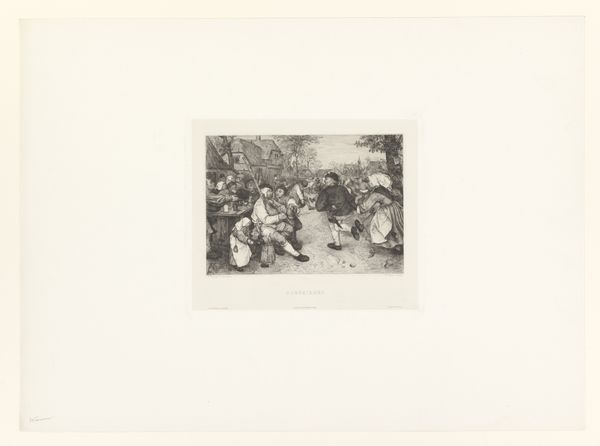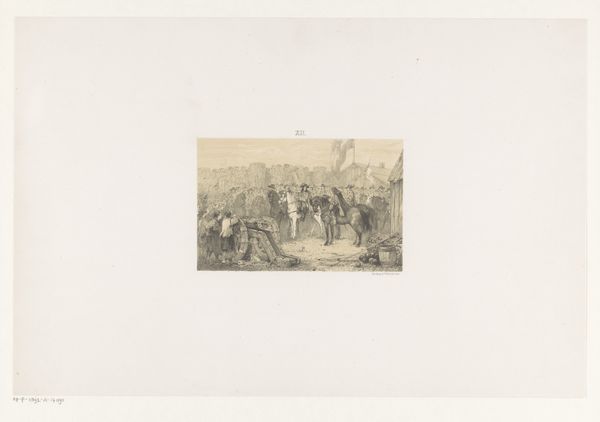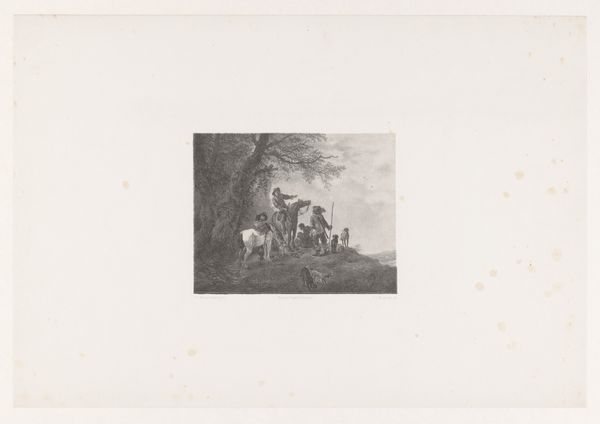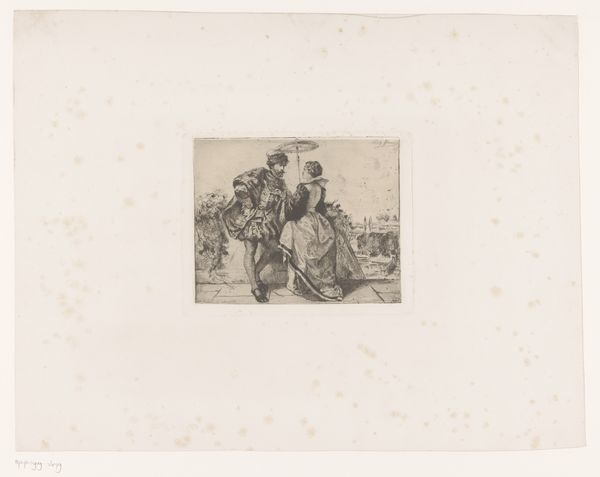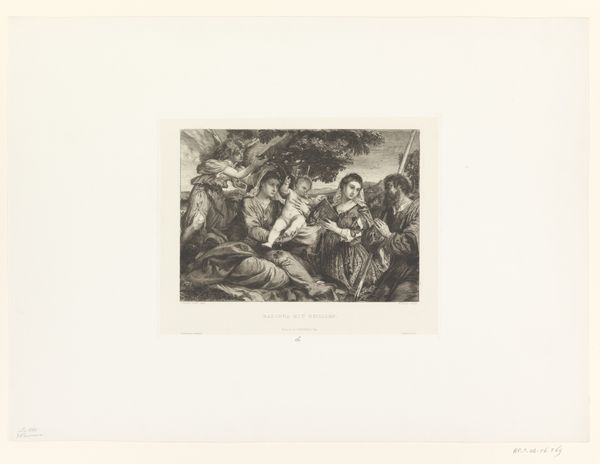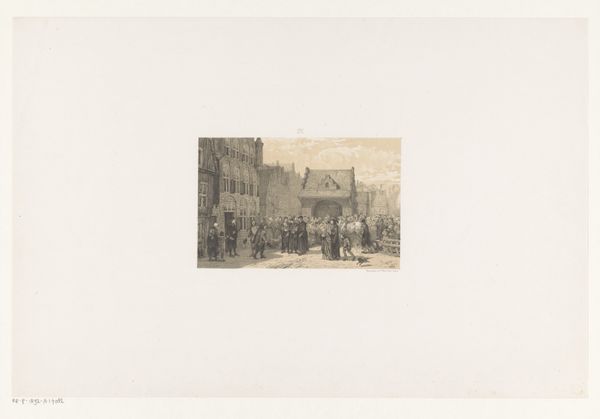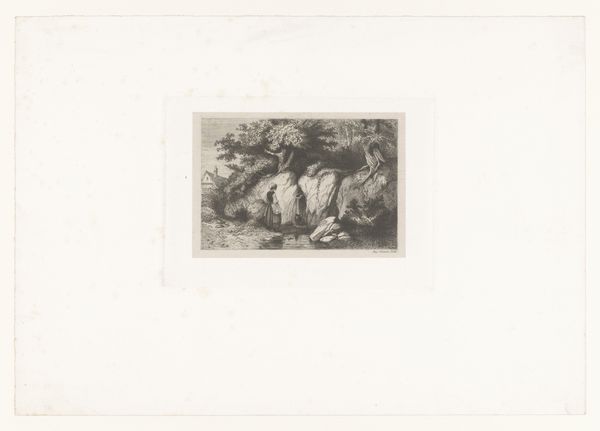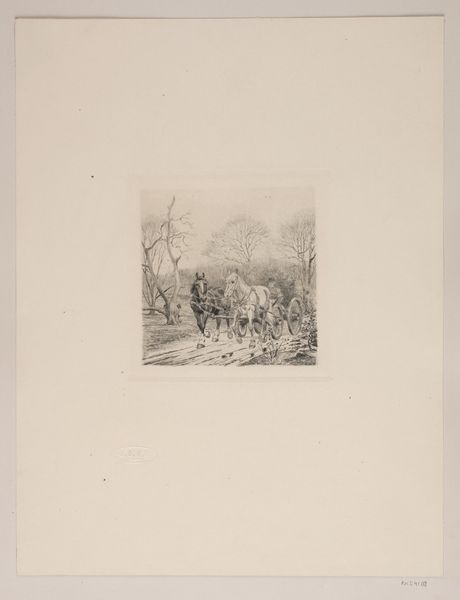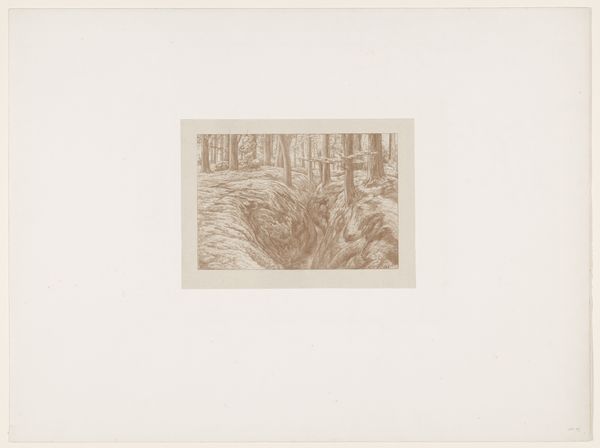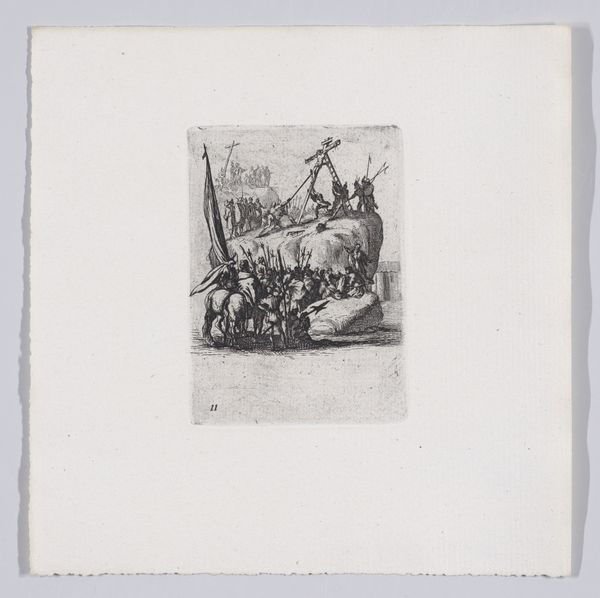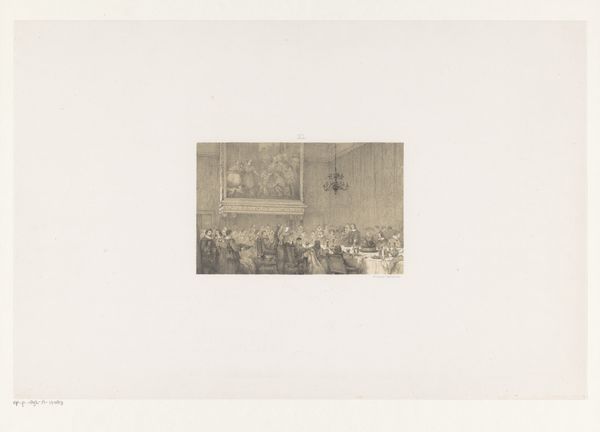
Dansende figuren rondom een vrijheidsboom op de Dam in Amsterdam 1876
0:00
0:00
#
white colour balance
#
photo of handprinted image
#
pastel soft colours
#
pale colours
#
light coloured
#
repetition of white
#
white palette
#
white balance
#
repetition of white colour
#
soft colour palette
Dimensions: height 355 mm, width 535 mm
Copyright: Rijks Museum: Open Domain
Johan Conrad Greive made this print, "Dancing Figures Around a Liberty Tree in Dam Square, Amsterdam," using etching, a printmaking process, sometime in the late 19th century. Etching involves coating a metal plate with a waxy, acid-resistant substance called a ground. The artist scratches an image into this ground, exposing the metal. The plate is then immersed in acid, which bites into the exposed lines, creating grooves. These grooves hold ink, which is then transferred to paper under high pressure, producing the final print. The technique allows for fine, detailed lines, capturing the atmosphere of the Amsterdam square. But it’s also a means of production. Prints like this one were relatively inexpensive and easily reproduced. This brings the celebratory scene to a broader public, beyond those who were there in person. Looking at this etching, we see how a print, traditionally regarded as a 'lesser' art form, can be an important means of documenting and disseminating cultural moments. It challenges the distinction between high art and everyday life.
Comments
No comments
Be the first to comment and join the conversation on the ultimate creative platform.
